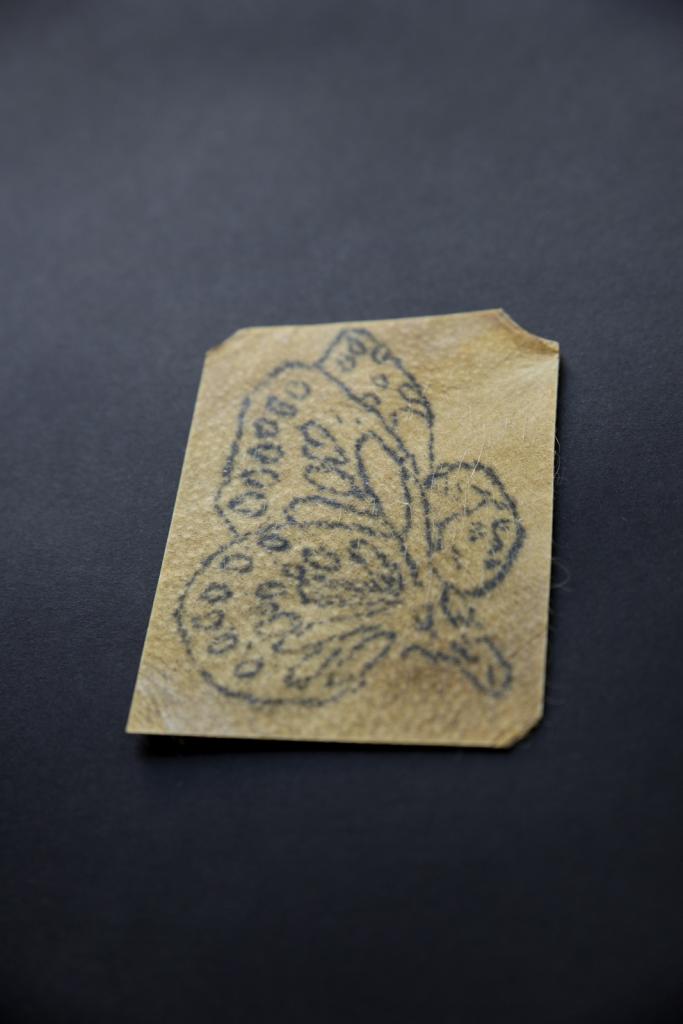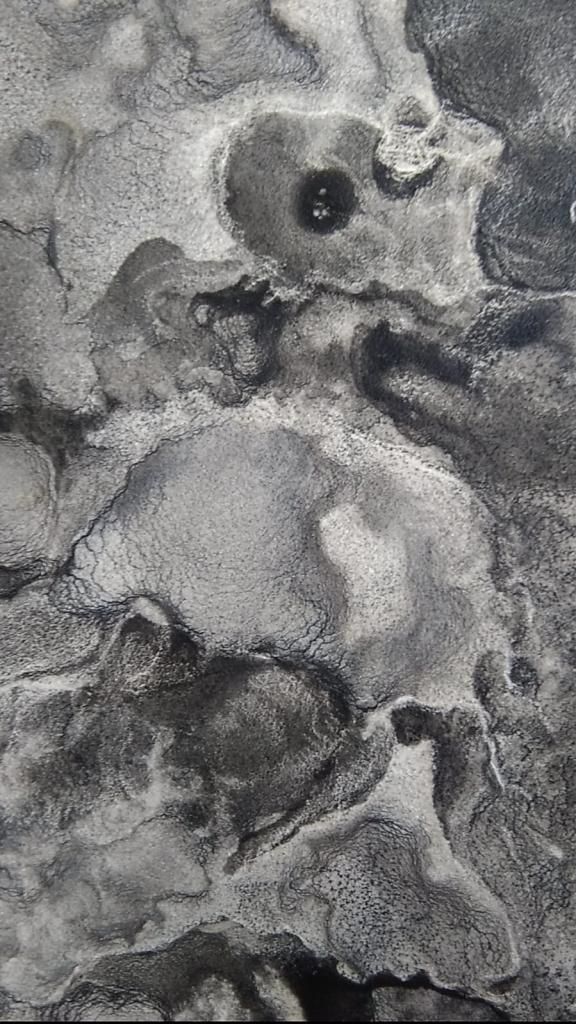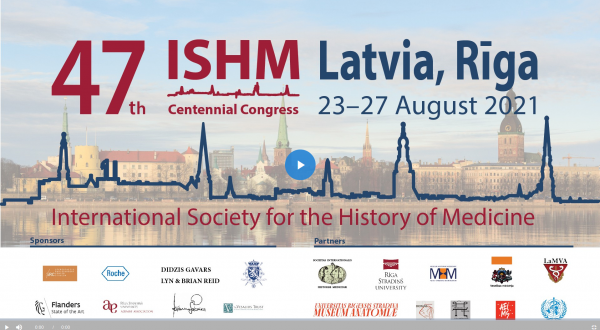A year of growth for the RSU Anatomy Museum
The RSU Anatomy Museum is for pupils, students and researchers – anyone who is interested in the wonder of the human body.
In autumn 2019 a new and contemporary museum will open inside the territory of the Anatomical Theatre. The historical collection will take pride of place in a modern exposition, also featuring multimedia exhibits. RSU Assistant Professor and development manager of the museum, Ieva Lībiete tells of the successful development of the exposition design even before construction began – to avoid technological and creative complications that could arise in the layout of museum infrastructure and exhibits in a building that has already been completed.
History of the museum
"The Anatomical Theatre, with its long history and unique character, is one of the important legacies of the history of Riga. Medics have been improving their knowledge and skills here since 1920, when the Riga Orthodox Spiritual Seminar was rebuilt to become an anatomical theatre. Since 1920, the Anatomy Museum was located on the second floor of the building (based on the collection of anatomical specimens of Jēkabs Prīmanis). Over the course of its almost 100 years of existence, the museum has changed its institutional affiliation, name and target audience multiple times, but in the summer of 2017 it returned under the wing of its historical heir, Rīga Stradiņš University. Next year, the museum is moving to a separate building inside the Anatomical Theatre territory. The building was once the location of the RSU Language Centre and historically built as a horse stable.
Currently, the museum collection comprises 5940 units that represent normal and pathological human anatomy, comparative anatomy, embryology and congenital anomalies, as well as tattoo art of the 1930s and anthropological studies.
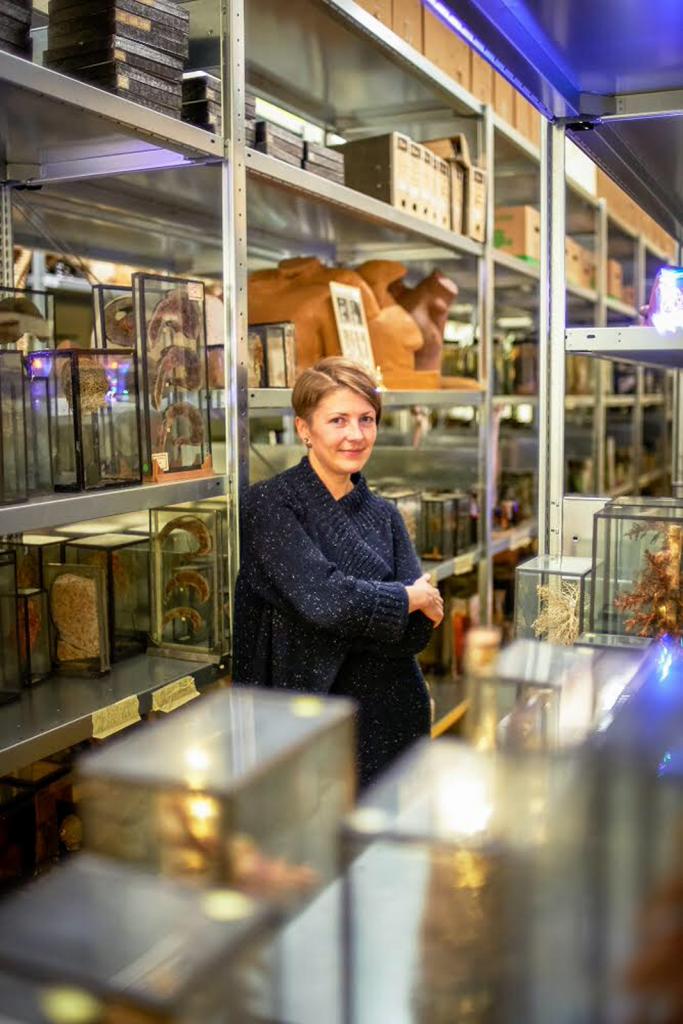
Ieva Lībiete with the Anatomy Museum collection
New museum - new challenges
"New museum – new challenges!" admits Assistant Professor I. Lībiete, saying that the challenge is restoring and preserving the historic collection by taking into consideration the best examples and practice that is currently used in other anatomy museums in the world. The RSU Anatomy Museum collection was developed between 1920 and 1944. Due to the war and emigration there was no transfer of knowledge and experience from one generation to the next, they disappeared along with the experts of that time. The history of the specimen origin is lost, the methods used in specimen preservation are not documented either, nor are the specific preservation solutions used for wet specimen preservation.
International cooperation
"Since 2005, when I started working at the Pauls Stradiņš Museum of the History of Medicine, we have been making professional connections with collection curators in museums in Europe and USA. Interestingly, each of them has their own individual restoration experience and practice. The prevailing opinion at one time was that wet specimens should be stored only in the solutions in which they were initially fixed. Several museums have adopted the practice of replacing toxic solutions, such as formalin, that were used in the past, with other – harmless solutions. For example, we store specimens in special vessels with formalin solutions, whereas, in most European museums, such specimens are stored in glycerine-based solutions and most commonly in alcohol in USA," museum development manager I. Lībiete explains, adding that the RSU Anatomy Museum has chosen to adopt the European practice for storing historic specimens and uses a specimen preservation protocol that was developed in the Vrolik Museum at the Academic Medical Centre in Amsterdam.
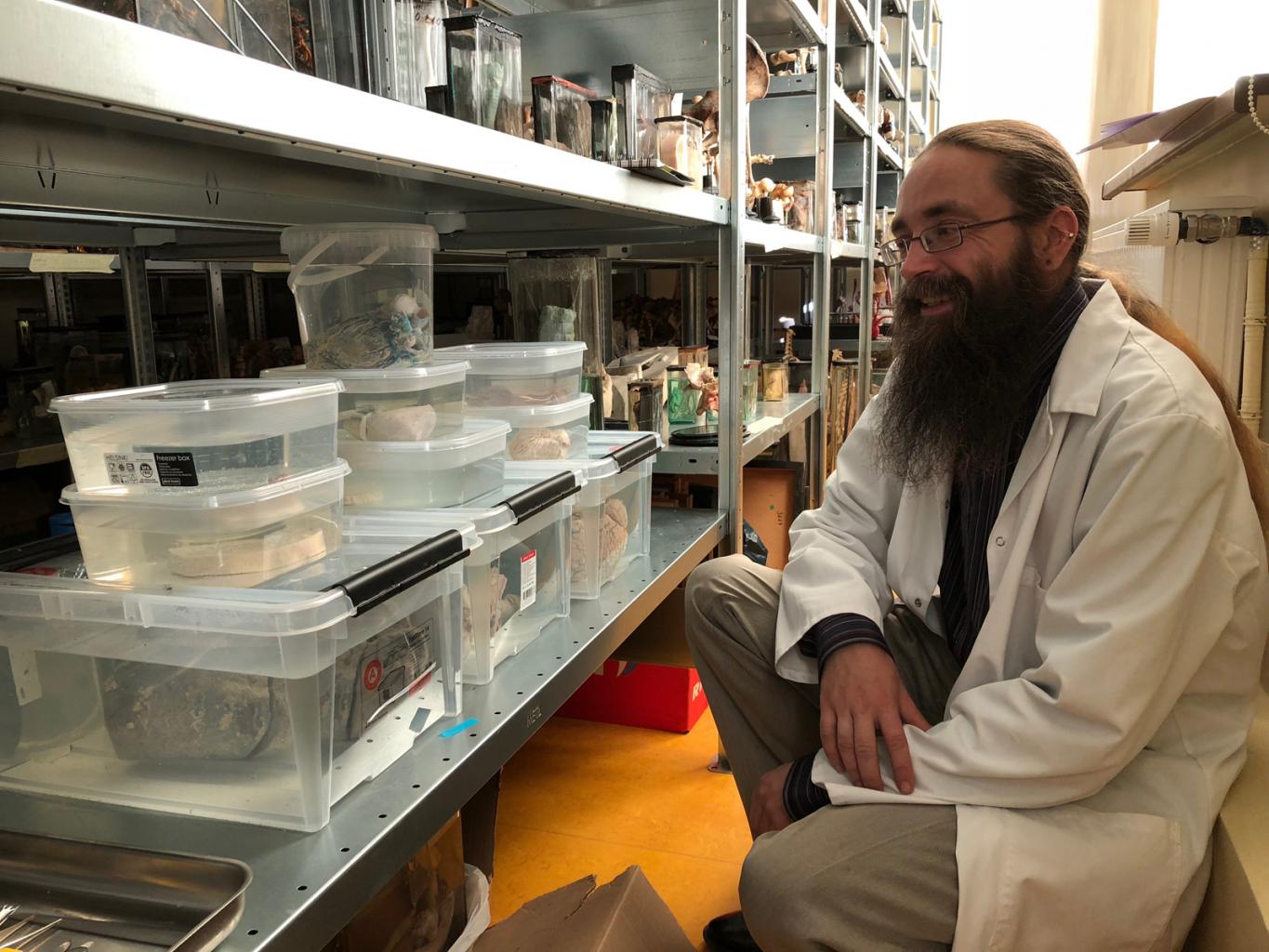 Biologist and specialist at the Latvian Museum of Natural History, Edgars Dreijers, is working on the restoration of wet exhibits following the Vrolik Museum protocol.
Biologist and specialist at the Latvian Museum of Natural History, Edgars Dreijers, is working on the restoration of wet exhibits following the Vrolik Museum protocol.
The most successful cooperation is with the Gordon Pathology Museum at King's College, London. It has the largest pathology collection in the United Kingdom. The curator of the collection, Bill Edwards, visited Riga last summer when he led a workshop in wet specimen restoration. B. Edwards will visit Riga again in 2019, when the RSU Anatomy Museum is planning to host the international summer workshop for the European Association of Museums of History of Medical Sciences, held in one of the European cities every second year. The Riga workshop will be devoted to preservation matters and the use of historic collections, including their potential application in the study process. ''Medicine museums are a very small, therefore very friendly community'', Ieva continues, ''Our colleagues from the Mutter Museum in Philadelphia, the Smithsonian Museum in Washington, the Roche collection in Basel and others have also shared their advice.''
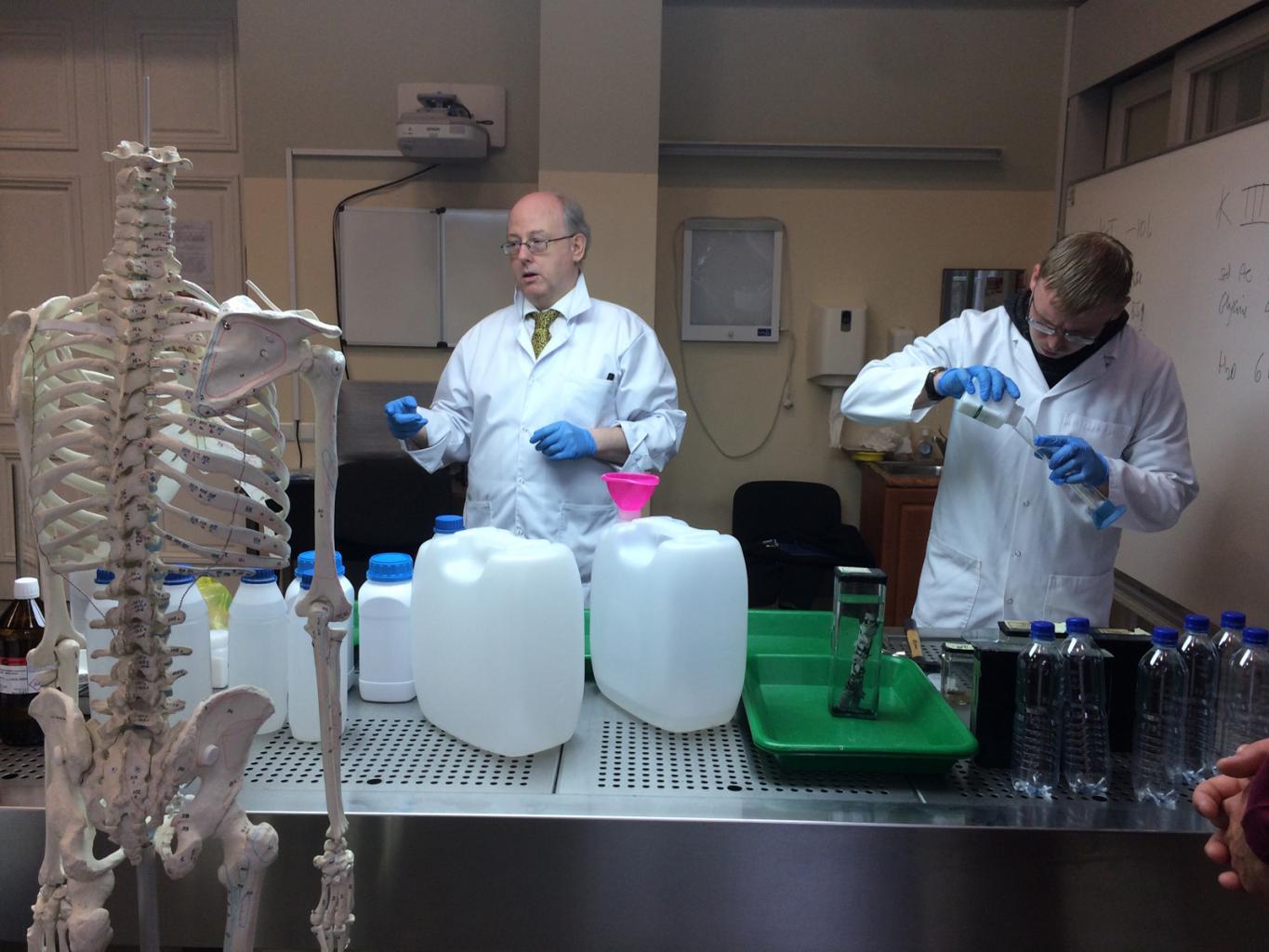 Bill Edwards and Didzis Kukainis, laboratory assistant at the Institute of Anatomy and Anthropology, preparing for the wet specimen restoration workshop
Bill Edwards and Didzis Kukainis, laboratory assistant at the Institute of Anatomy and Anthropology, preparing for the wet specimen restoration workshop
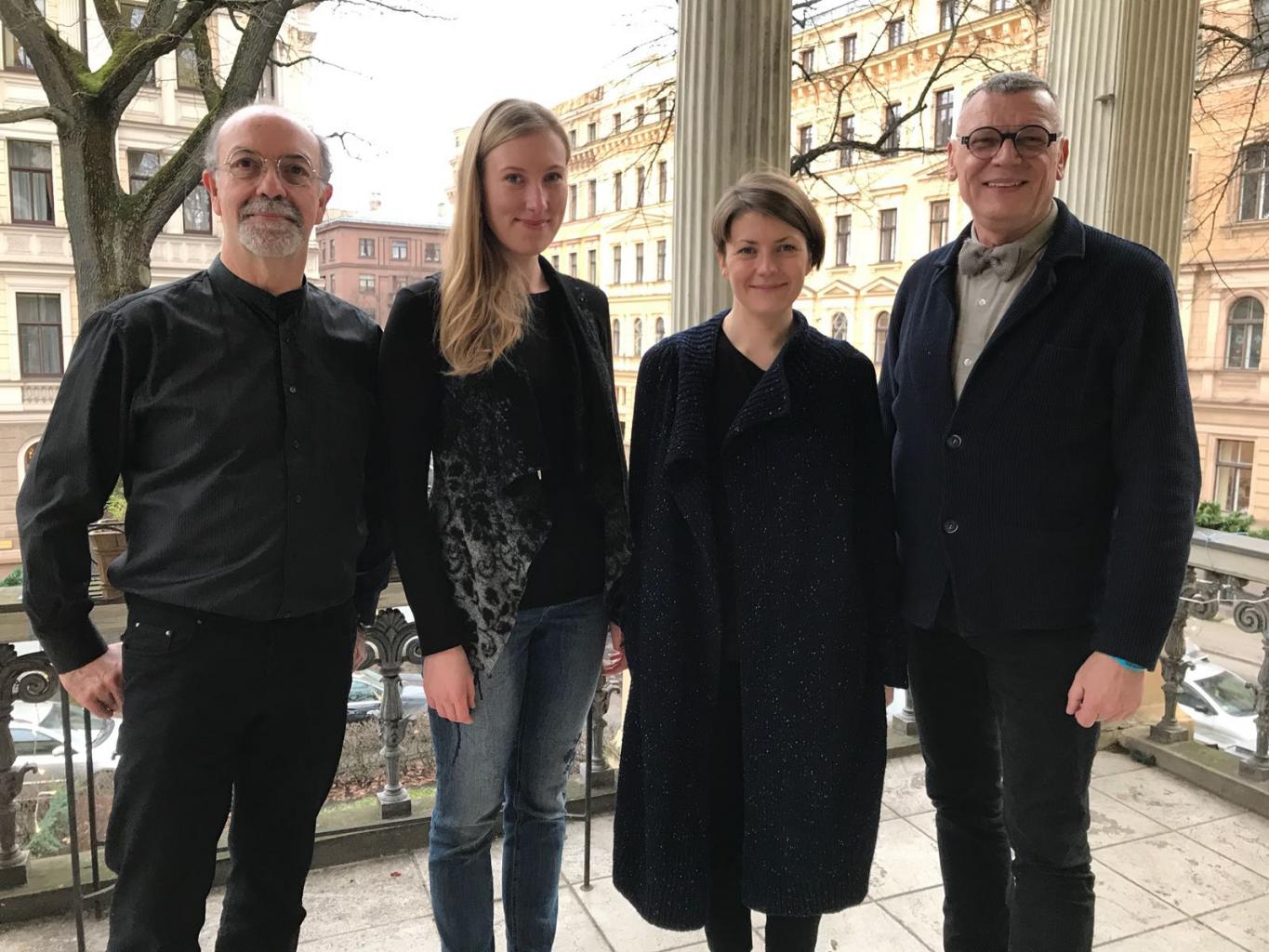 Curator of the "Roche" anatomical collection, Oscar Baldomero shared his experience regarding corrosion specimen preservation. In photo (from left): O. Baldomero, museum specialists Ieva Lībiete and Ilze Sirmā, director of the RSU Institute of the History of Medicine, Professor Juris Salaks
Curator of the "Roche" anatomical collection, Oscar Baldomero shared his experience regarding corrosion specimen preservation. In photo (from left): O. Baldomero, museum specialists Ieva Lībiete and Ilze Sirmā, director of the RSU Institute of the History of Medicine, Professor Juris Salaks
Students get involved
This summer, eleven RSU students actively participated in the workshop, cleaning and documenting historic skulls, accompanied by composer Gustav Mahler's symphonies as background music. During the workshop, the skulls were studied, described and cleaned, not only of dust, but also moss, soil and even notes on the time and place where the skulls had been excavated. The involvement of students as volunteers shows that the anatomical collections have educational potential – both within an anatomical and historical, as well as a museum context. The museum is also planning to find an opportunity to add a special guide for medical students to the already existing multimedia guide for museum visitors.
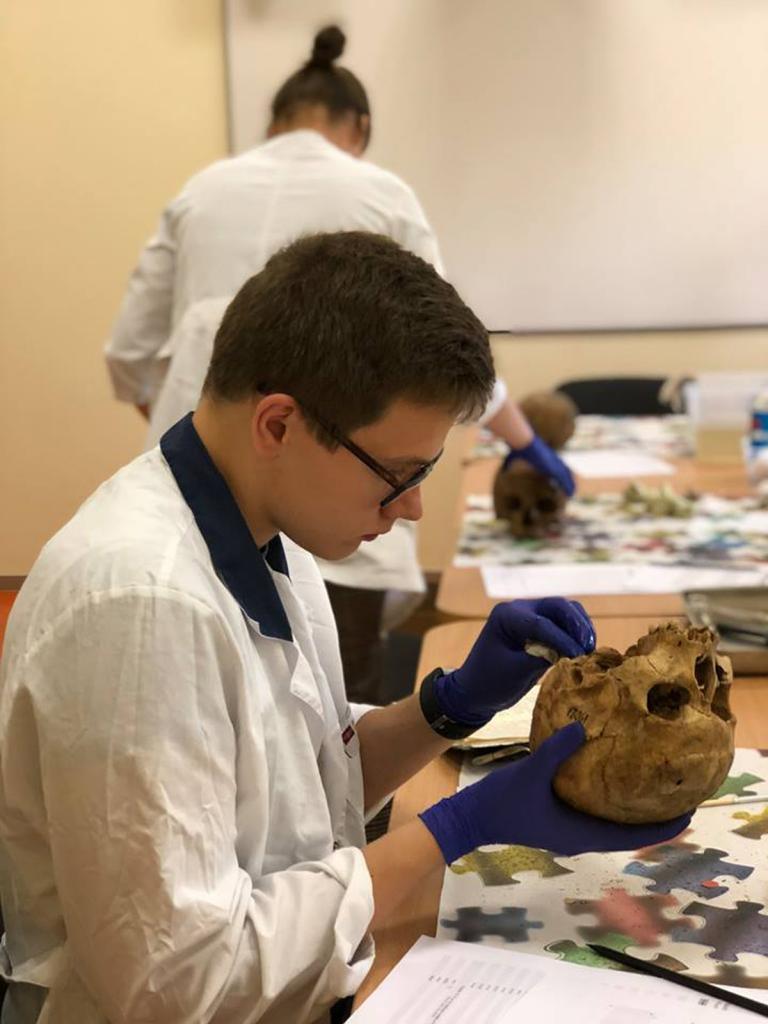
RSU medical students assist in dusting off the museum skull collection
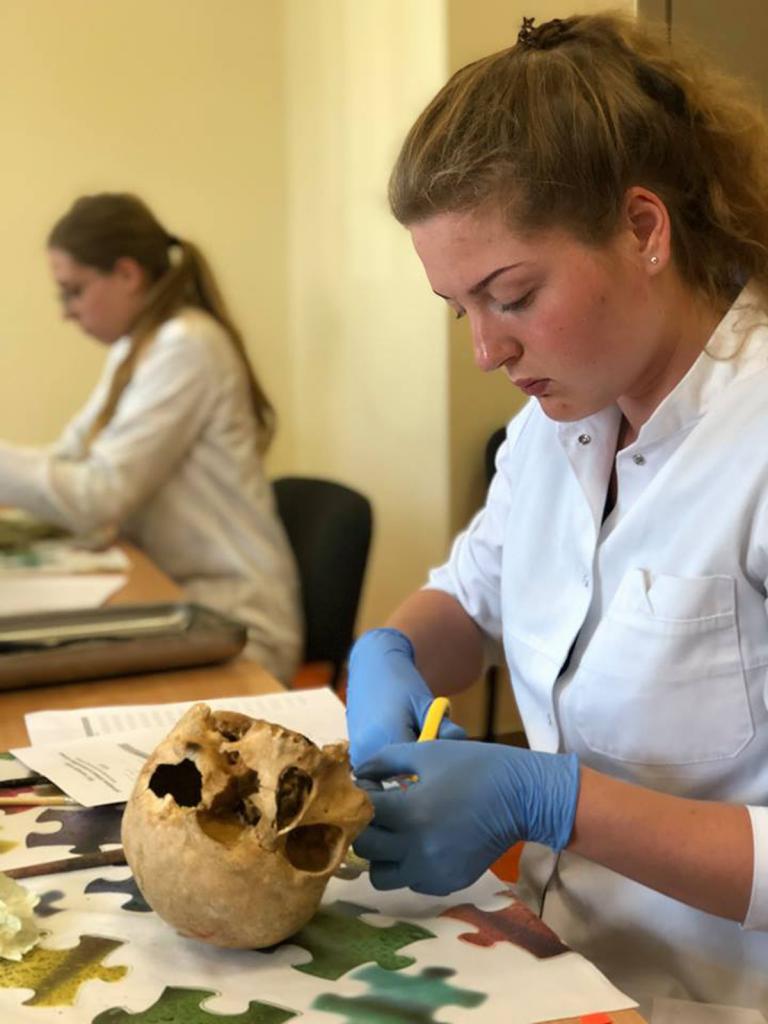
Modern technologies help with tactile experience
A new opportunity to enrich the museum exhibition has been through accurate 3D-printed replicas of the unique exhibits, which are colourful and easier to understand. With the support of the Culture Capital Foundation of Latvia, the museum has used this technique to print skulls, spines and other body parts. I. Lībiete views the tactile experience as also important for museum visitors. It's essential that you are allowed to touch instead of being prohibited to touch as is usually the case. Additionally, this method could be used to transform the RSU Anatomy Museum into an integrative museum, making the exhibition available also to people with, for example, vision impairment.
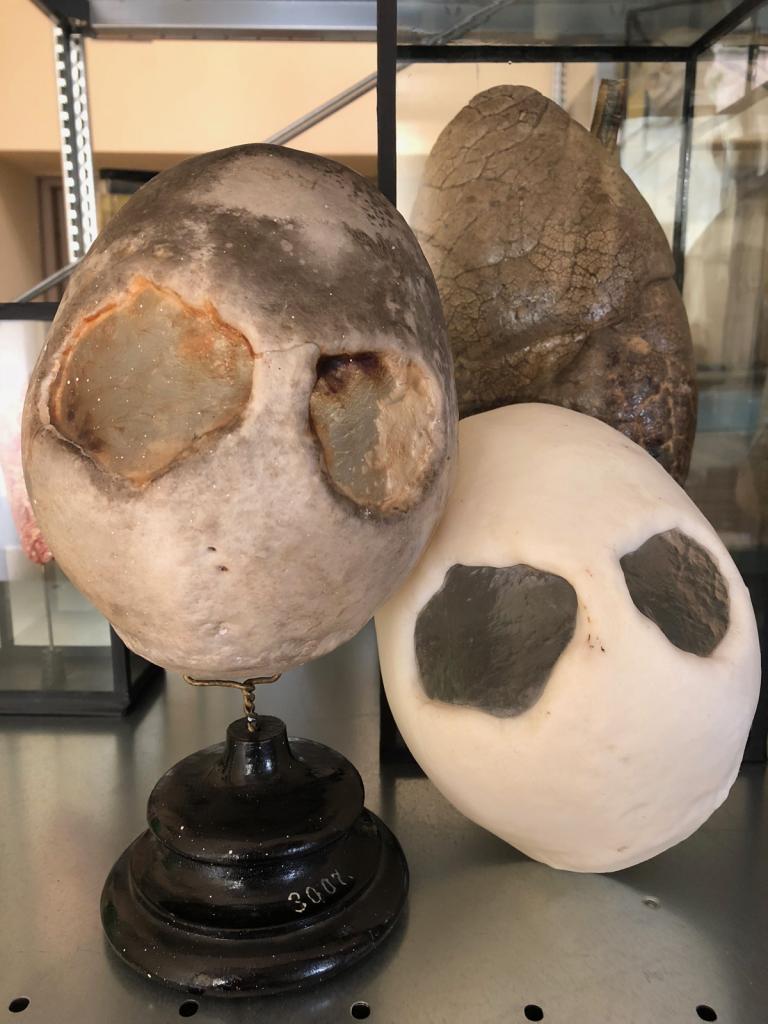
skull with severe syphilitic lesions and its 3D copy
Where anatomy meets
The power of the Anatomy Museum is in its multidisciplinary work, because anatomy collections are a place of interaction between anatomy and art. Furthermore, each exhibit contains not only anatomical information, but also historical evidence and a story about the person and the period in history that it represents. By engaging specialists from different specialty areas, we explore new ways to deliver this information to our visitors.
The Anatomy Museum is already developing both local and international cooperation with a special focus on cooperation with artists. On 30 August, Pauls Stradiņš Museum of the History of Medicine will open a new exhibition – "Skins" – the result of a research and art project, a collaboration between the RSU Anatomy Museum and artist Ausma Šmite. The visitors will be able to see some of the tattooed skin specimens from the RSU Anatomy Museum collection, to find out the gruesome history behind them, as well as to have a look at the artist's works, created as a result of her interaction with the skins.
A tattooed skin specimen. 1927. |
A fragment of Ausma Šmite's work in the project "Skins" |
A similar result of collaboration with an artist will be presented during the darker period of the year, when, thanks to the support of the Culture Capital Foundation of Latvia, in collaboration with director and actor Varis Klausītājs, the Anatomy Museum will invite spectators to a chamber play "Corpse Book Stories: Skeleton No. 438". The play will be about believable and unbelievable legends that museum employees have told about one Anatomy Museum exhibit for almost 100 years.
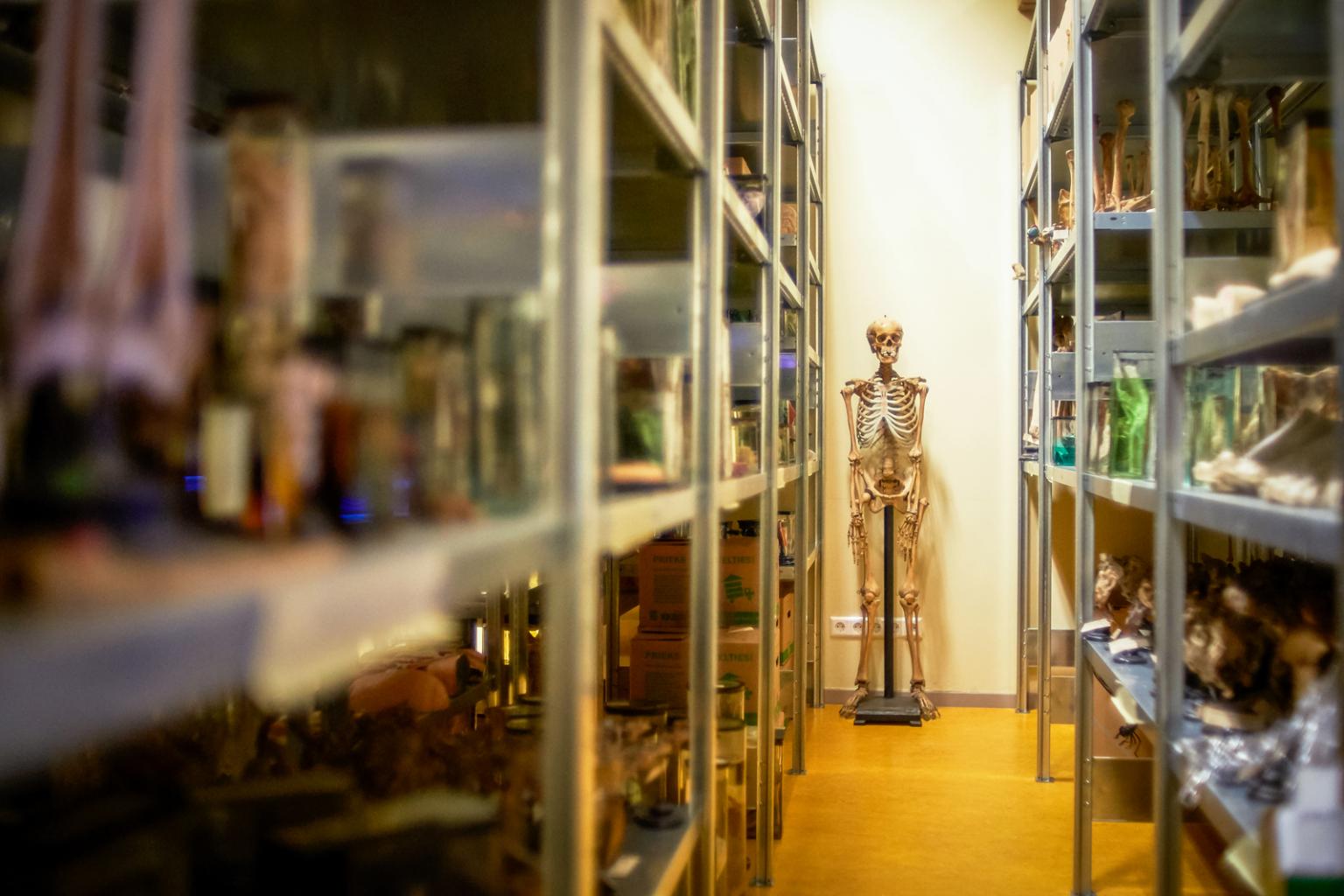
In the museum collection
Historical anatomical collections in the 21st century
Medical historian, Assistant Professor I. Lībiete admits that historical anatomy collections are unique because of their dual nature. On one hand the specimens are things, but on the other hand they are parts of people who once lived. Therefore, anatomy collections require a respectful attitude and well-considered, meaningful utilisation. Ieva agrees that the collection can best be appreciated by using it, curating, researching, exhibiting and making use of it to provide knowledge in various ways that are engaging to the contemporary museum visitor. One can then say that the existence of the collection has been justified, that it's alive, serves as a tool for studies and research and broader popular science goals.

